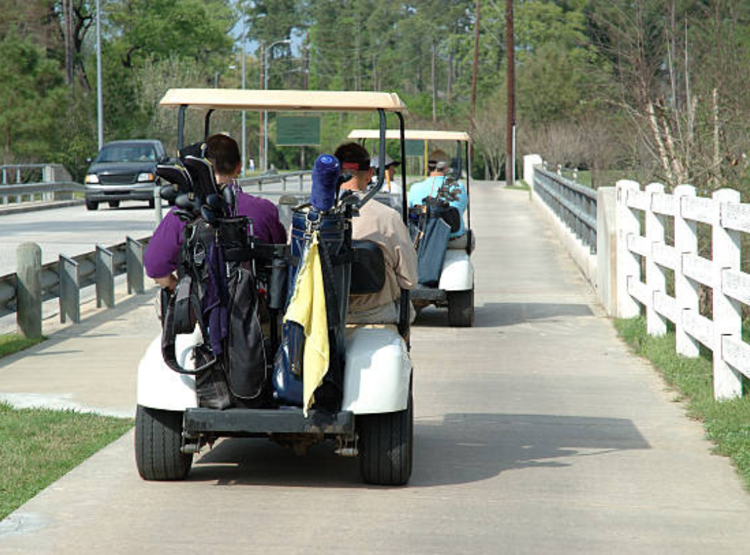Beyond Dawlish

Golf carts have become integral to recreational activities and daily commuting in various communities. Whether used on golf courses, gated neighborhoods, or even larger public areas, these vehicles offer convenience and fun. However, shared golf carts come with their own set of challenges. Adhering to clear community guidelines is essential to ensure safety, efficiency, and harmony among users.
This article outlines the best practices and rules for shared golf cart use, ensuring that everyone enjoys a smooth and safe experience. Whether you’re a first-time user or a regular, these community guidelines will help you navigate shared cart systems responsibly.
Why Are Community Guidelines Important?
Shared golf carts are often considered community property, and their misuse can lead to accidents, wear and tear, or even disputes among users. Having well-defined community guidelines ensures that:
- Safety is prioritized for all riders and pedestrians.
- The carts are preserved for long-term use.
- Clear rules help prevent conflicts between users.
By following these guidelines, you not only respect the rules but also contribute to a more cooperative and friendly environment.
Safety Guidelines for Shared Golf Cart Use
Follow Speed Limits
One of the primary rules in shared cart usage is respecting speed limits. Golf carts are designed for moderate speeds, making them safe for use in community areas. Exceeding the speed limit may lead to accidents, especially in neighborhoods with children, pedestrians, or other vehicles. Stick to posted speed signs and always drive cautiously.
Prioritize Pedestrian Safety
Shared spaces often include pedestrian pathways. Always give the right of way to walkers and joggers. When approaching pedestrians, slow down and signal your presence by using the horn or a verbal alert. This small act of courtesy can prevent unnecessary accidents.
Limit Passenger Load
Overloading the cart with too many passengers or heavy items can affect its balance and performance. Most golf carts are designed to carry two to four people comfortably. Check the cart’s capacity limit and adhere to it for everyone’s safety.
Avoid Distractions
Driving a golf cart may seem casual, but distractions can still lead to mishaps. Avoid using mobile phones, eating, or engaging in activities that take your attention off the road. Responsible driving is a key component of these community guidelines.
Proper Maintenance and Care
Report Damage Immediately
Shared carts are used by multiple people, making it vital to report any damages or malfunctions as soon as you notice them. Whether it’s a flat tire, a faulty brake, or a broken light, reporting issues promptly helps the community address them before they worsen.
Charge the Cart After Use
Most golf carts run on rechargeable batteries. If your shared cart is battery-powered, ensure it’s plugged in after your ride. Leaving the cart uncharged can inconvenience the next user and reduce the cart's longevity.
Keep It Clean
After using the cart, make sure to clean up any trash or personal belongings. A shared resource should be treated with respect, and leaving it tidy for the next user demonstrates consideration and community spirit.
Rules for Shared Use Areas
Designated Parking Only
Shared golf carts often come with designated parking spots. Avoid leaving the cart in random locations, as this may block pathways or inconvenience others. Parking in its proper area also ensures the cart is easily accessible for the next user.
Respect Reserved Time Slots
If your community has a reservation system for golf carts, adhere to the time slots you’ve booked. Using the cart beyond your scheduled time can delay others who are waiting for their turn.
Understand Local Regulations
In some areas, shared golf carts must adhere to local laws, such as licensing requirements or specific operating hours. Familiarize yourself with the regulations in your locality to ensure compliance.
Sharing with Responsibility: Building Trust
The shared nature of community golf carts is built on trust and mutual respect. It’s not just about following rules—it’s about fostering a sense of collaboration within the community. Everyone plays a role in keeping the system smooth and accessible for all.
Enhance Your Golf Cart Experience
While many communities rely on traditional golf carts, some individuals and communities have begun exploring customized options to suit their unique needs. Whether it’s for recreational purposes or enhanced functionality, custom go-carts Delaware offers tailored solutions for those seeking something more specialized. These customizations range from upgraded features to designs that reflect personal style. Communities that adopt customized carts often find them more versatile and better suited to their specific requirements.
Environmental Considerations
Opt for Electric Over Gas
Electric golf carts are an eco-friendly option, reducing emissions and operating quietly. If your community is considering upgrading or replacing its fleet, electric carts are a sustainable choice that aligns with modern environmental goals.
Minimize Idle Time
Letting the cart idle for long periods wastes energy and reduces battery life. Always switch off the engine when not in use to conserve resources and reduce unnecessary wear.
Conflict Resolution: Handling Disputes Over Shared Use
Even with comprehensive community guidelines, disputes may arise. For instance, someone might take the cart without a reservation, or disagreements might occur over damage responsibility. Communities can address such issues through:
- Clear communication: Discuss problems calmly and avoid confrontational behavior.
- Mediation: Appoint a neutral party, such as a community manager, to resolve disputes.
- Penalty systems: Implement fines or restrictions for repeated misuse of shared carts.
By handling disputes constructively, the community can maintain a harmonious environment.
Promoting a Safe and Enjoyable Environment
Effective community guidelines are essential for shared golf cart use. They ensure safety, prevent misuse, and promote a spirit of cooperation among users. Whether it’s respecting speed limits, adhering to maintenance protocols, or sharing the resource responsibly, these practices form the foundation of a well-functioning community system.
By following these tips, you’ll not only contribute to a better community experience but also help preserve the carts for future users. After all, shared golf carts are a privilege that relies on everyone’s cooperation to maintain.




